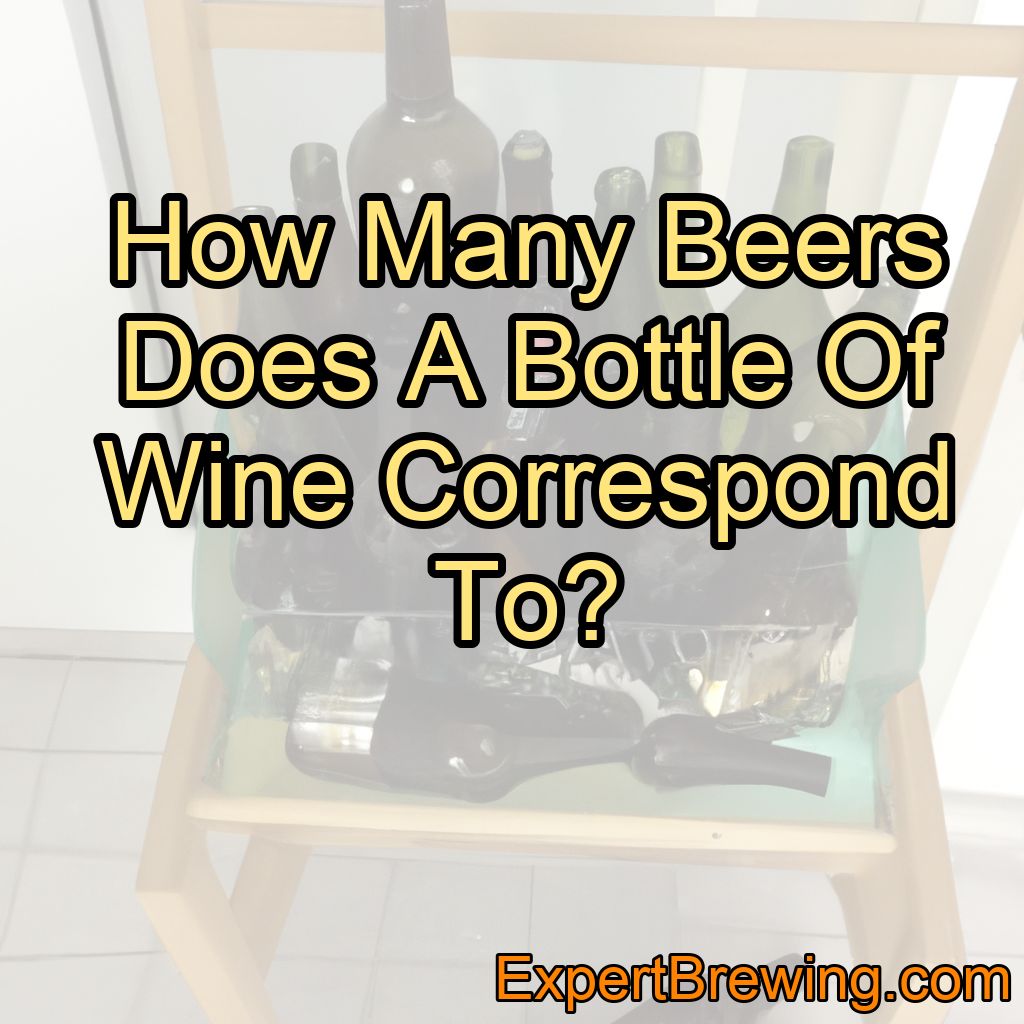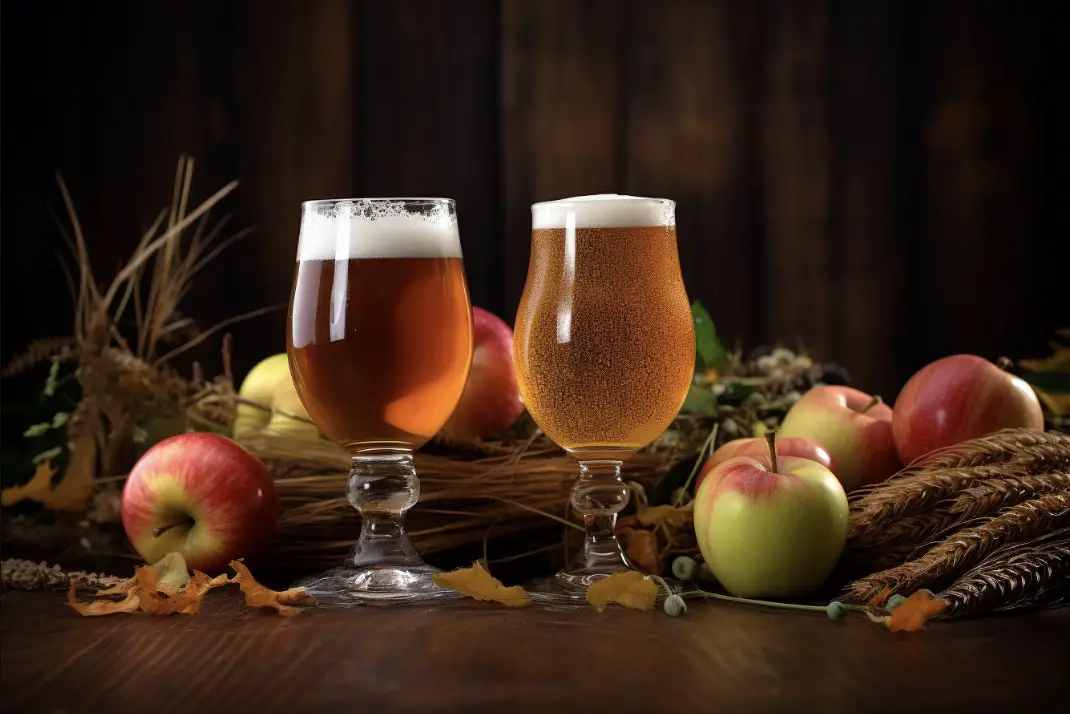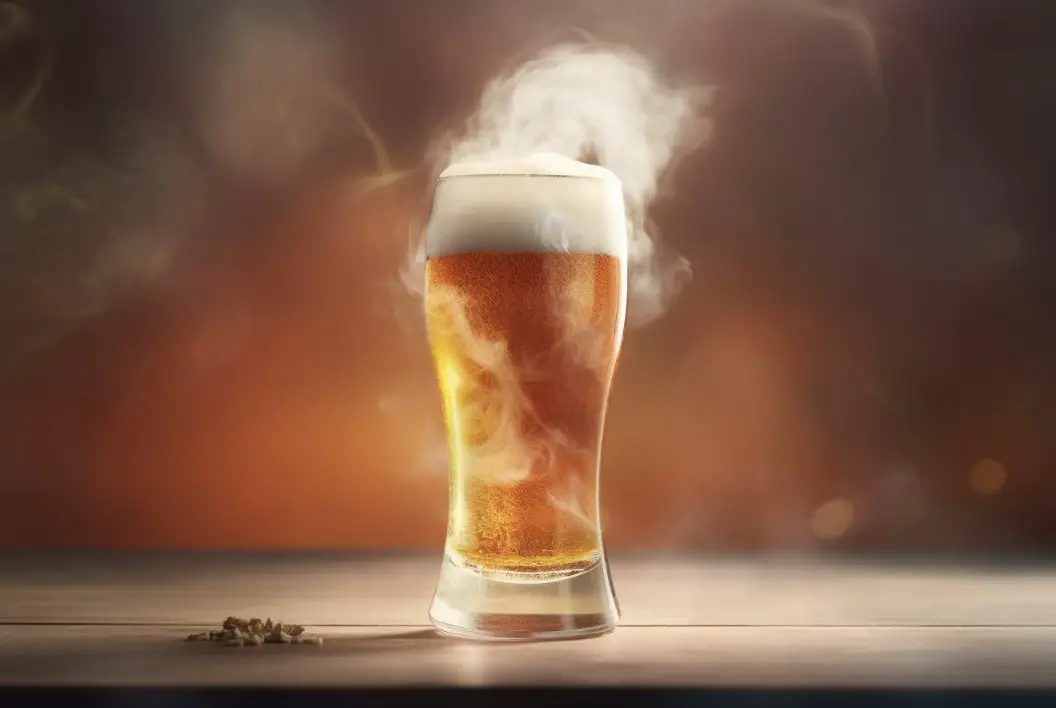As a seasoned brewer and wine enthusiast, I’ve often found myself in conversations with friends and acquaintances about the age-old question: how many beers does a bottle of wine correspond to? The answer is not as straightforward as one might think, as it depends on various factors such as alcohol content, serving size, and caloric intake. In this blog post, I will delve into these factors and share some personal experience to help you better understand the relationship between beer and wine.
In a nutshell, a standard bottle of wine (750ml) contains approximately 5-7 beers, depending on the alcohol content and serving size.
1. Alcohol Content: ABV And Standard Drinks
When comparing beer and wine, it’s essential to consider their respective alcohol content, usually expressed as a percentage by volume (ABV). Wine typically has a higher ABV than beer, ranging from 11-14% for most wines, while the average beer has an ABV of 4-6%.
To make a fair comparison, we need to look at the concept of standard drinks. A standard drink contains 14 grams of pure alcohol or 0.6 ounces. In the United States, a standard drink is 12 ounces of beer with 5% ABV, 5 ounces of wine with 12% ABV, or 1.5 ounces of distilled spirits with 40% ABV.
Using the standard drink concept, a 750ml bottle of wine at 12% ABV contains approximately 5 standard drinks. In comparison, a 12-ounce beer at 5% ABV contains around 1 standard drink. Therefore, a bottle of wine corresponds to roughly 5 beers.
2. Serving Size: Pints, Glasses, And Bottles
Another factor to consider is the serving size. Beer is often consumed in pints (16 ounces) or bottles (12 ounces), while wine is typically served in 5-ounce glasses. With this in mind, a bottle of wine might correspond to fewer beers if you’re comparing pints or more beers if you’re comparing bottles.
For example, a bottle of wine (750ml) would equal approximately 3.3 pints of beer or 5.5 bottles of beer. However, this comparison assumes that the beer’s alcohol content is similar to the wine being compared, which is not always the case.
3. Calories: Beer Vs. Wine
Caloric intake is another aspect to consider when comparing beer and wine. Generally speaking, wine contains more calories per ounce than beer. However, due to the difference in serving sizes, a standard serving of beer (12 ounces) may contain more calories than a standard serving of wine (5 ounces).
For example, a 12-ounce beer with 5% ABV contains about 150 calories, while a 5-ounce glass of wine with 12% ABV contains roughly 120 calories. In terms of calories, a bottle of wine (750ml) would correspond to about 4 beers.
4. Taste And Personal Preference
Taste and personal preference play a significant role in the beer versus wine debate. Some individuals prefer the taste of beer over wine, while others may appreciate the complexity and variety of flavors in different types of wines. Your preference for beer or wine may affect how many beers you feel a bottle of wine corresponds to.
5. Social Settings And Drinking Culture
The social setting and drinking culture can also impact the comparison between beer and wine. In some situations, such as a casual gathering or sporting event, beer might be the beverage of choice, while wine may be more suitable for a formal dinner or wine tasting event.
6. Food Pairings
Food pairings can also influence the decision between beer and wine. While wine is often considered more versatile and better suited for pairing with a diverse range of foods, beer can also complement various dishes. The choice between beer and wine may depend on the specific meal and your personal taste preferences.
7. Price And Affordability
Price and affordability are essential factors to consider when comparing beer and wine. Generally speaking, beer is more affordable than wine, particularly when comparing on a per-serving basis. However, the cost of wine can vary significantly depending on the quality and region of origin.
8. Health Benefits And Risks
Both beer and wine have potential health benefits and risks. Moderate consumption of either beverage has been associated with a reduced risk of cardiovascular disease. However, excessive alcohol consumption, regardless of the type, can lead to a range of health problems, including liver disease and addiction.
9. Accessibility And Availability
Finally, accessibility and availability can impact the comparison between beer and wine. While both beverages are widely available, beer is generally more accessible due to its lower price point and larger selection of styles and brands.
Conclusion
In conclusion, a standard bottle of wine (750ml) corresponds to approximately 5-7 beers, depending on factors such as alcohol content, serving size, and caloric intake. However, personal preferences, social settings, and various other factors can influence the perceived relationship between beer and wine.
Here are 10 facts about beer and wine to consider:
1. Wine typically has a higher ABV than beer, ranging from 11-14%.
2. A standard drink contains 14 grams of pure alcohol or 0.6 ounces.
3. A bottle of wine (750ml) contains approximately 5 standard drinks.
4. Beer is often consumed in pints (16 ounces) or bottles (12 ounces).
5. Wine contains more calories per ounce than beer.
6. Taste and personal preference play a significant role in the beer versus wine debate.
7. Social settings and drinking culture can impact the choice between beer and wine.
8. Both beer and wine can be paired with various dishes to complement their flavors.
9. Beer is generally more affordable than wine on a per-serving basis.
10. Moderate consumption of either beer or wine has been associated with a reduced risk of cardiovascular disease.
FAQs
Is beer or liquor better for weight loss?
Neither beer nor liquor is better for weight loss. Both contain calories and can contribute to weight gain if consumed in excess. It’s important to practice moderation and choose lower calorie options when drinking.
How much wine is equal to 12 oz of beer?
The amount of wine equal to 12 oz of beer depends on the alcohol content of each. Generally, a 5 oz glass of wine (standard serving size) contains the same amount of alcohol as a 12 oz beer.
What has more calories a glass of wine or a beer?
A glass of wine typically has fewer calories than a beer. A 5-ounce glass of wine usually contains around 120-130 calories, while a 12-ounce beer can have anywhere from 100-200 calories or more, depending on the type of beer.
What is healthier beer or liquor?
Both beer and liquor can be enjoyed in moderation as part of a healthy lifestyle. However, beer typically contains more calories and carbohydrates per serving than most types of liquor. On the other hand, liquor tends to have a higher alcohol content per serving, which can increase the risk of overconsumption and its associated health risks. Ultimately, the healthiest choice depends on individual preferences and consumption habits.
Is it less fattening to drink beer or wine?
Both beer and wine contain calories and can contribute to weight gain if consumed in excess. However, wine generally has fewer calories per serving than beer. A 5-ounce glass of wine typically contains around 120-130 calories, while a 12-ounce serving of beer can range from 100-200 calories or more depending on the type and brand. Ultimately, moderation is key when it comes to alcohol consumption and weight management.
What is more fattening beer wine or liquor?
All alcoholic beverages contain calories, but the amount of calories varies depending on the type and the serving size. Generally, beer and wine have fewer calories per serving than liquor. However, the total calorie intake depends on the amount consumed. Drinking in moderation and making healthier choices, such as opting for light beer or dry wine, can help manage calorie intake.




